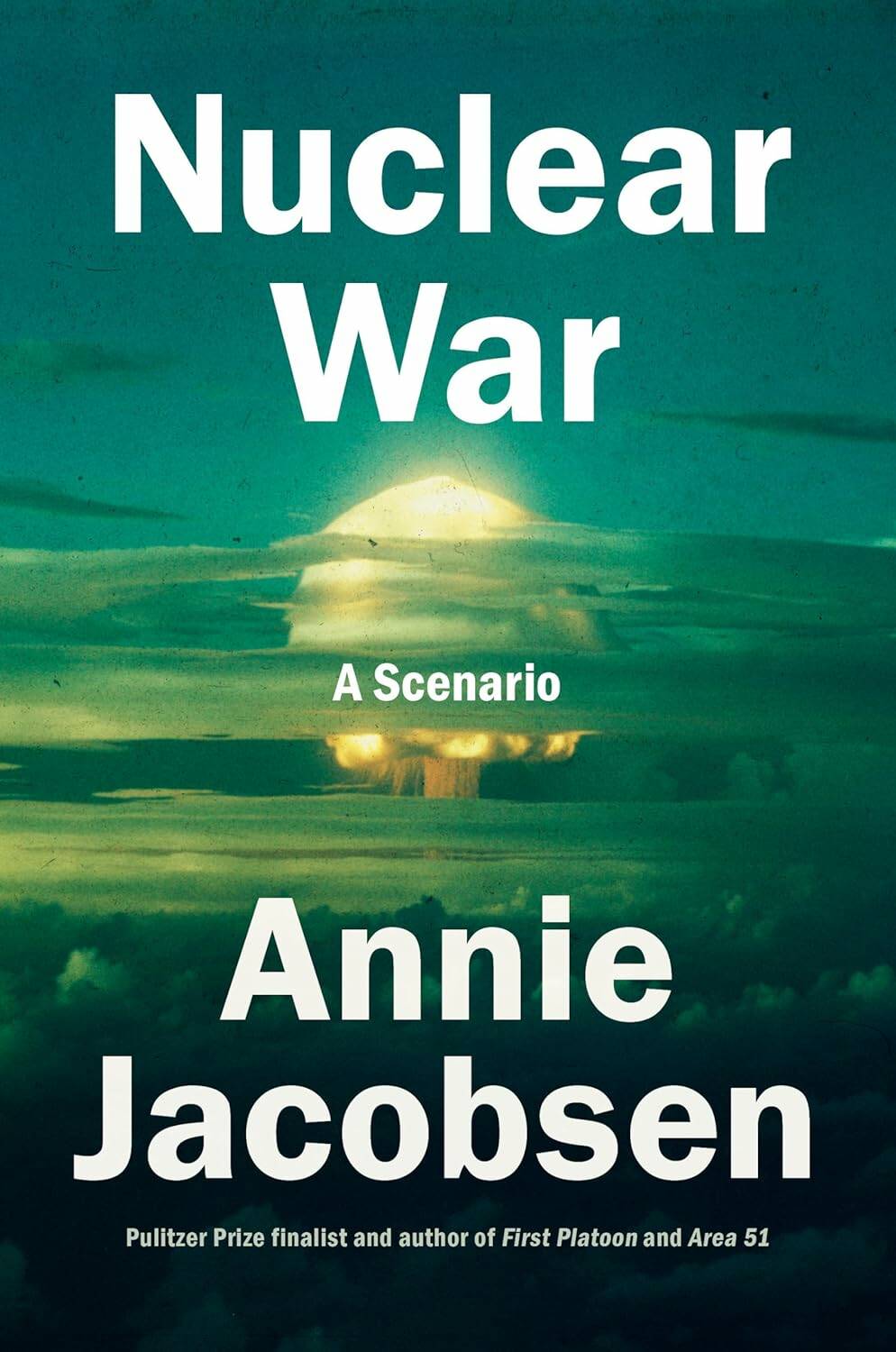A Nightmare scenario
Jacobsen details how a nuclear conflict could play out — and the devastating impact that would ensue
Advertisement
Read this article for free:
or
Already have an account? Log in here »
To continue reading, please subscribe:
Monthly Digital Subscription
$0 for the first 4 weeks*
- Enjoy unlimited reading on winnipegfreepress.com
- Read the E-Edition, our digital replica newspaper
- Access News Break, our award-winning app
- Play interactive puzzles
*No charge for 4 weeks then price increases to the regular rate of $19.00 plus GST every four weeks. Offer available to new and qualified returning subscribers only. Cancel any time.
Monthly Digital Subscription
$4.75/week*
- Enjoy unlimited reading on winnipegfreepress.com
- Read the E-Edition, our digital replica newspaper
- Access News Break, our award-winning app
- Play interactive puzzles
*Billed as $19 plus GST every four weeks. Cancel any time.
To continue reading, please subscribe:
Add Free Press access to your Brandon Sun subscription for only an additional
$1 for the first 4 weeks*
*Your next subscription payment will increase by $1.00 and you will be charged $16.99 plus GST for four weeks. After four weeks, your payment will increase to $23.99 plus GST every four weeks.
Read unlimited articles for free today:
or
Already have an account? Log in here »
Hey there, time traveller!
This article was published 01/06/2024 (545 days ago), so information in it may no longer be current.
In a year when a biopic on the scientist behind the first nuclear weapon dominated the box office and award-show stages, and in which the Bulletin of Atomic Scientists set the “Doomsday Clock” as close to apocalyptic midnight as it’s ever been, the eighth book from Pulitzer Prize-nominated author and investigative journalist Annie Jacobsen offers an insightful look into just how a global nuclear war could play out, in terrifying minute-by-minute detail.
UN Sec.-Gen. António Guterres said at a 2022 nuclear non-proliferation conference that “(h)umanity is just one misunderstanding, one miscalculation away from nuclear annihilation.” As Jacobsen tells it, that could take all of 58 minutes.
Jacobsen’s scenario involves a “bolt-out-of-the-blue” attack, with North Korea launching a single ground-based missile carrying a one-megaton payload (about 100 times the magnitude of the bomb dropped on Hiroshima), aimed to detonate over the U.S. capital.
The Associated Press files
Weapons used in a modern-day nuclear attack would be many times more powerful than the U.S. attacks on Nagasaki and Hiroshima.
This would be followed by a smaller warhead launched from one of Kim Jong Un’s retrofitted diesel submarines, lurking undetected off the California coast and targeting the Diablo Canyon nuclear power station, a move calculated to produce the “double-whammy” effect scientists call the “Devil’s Scenario.”
It would take only 33 minutes until the first warhead exploded over the Pentagon, “with a flash of light and heat so tremendous it is impossible for the human mind to comprehend. One-hundred-and-eighty-million degrees Fahrenheit is four or five times hotter than the temperature at the centre of the Earth’s sun,” Jacobsen explains.
And while it would take just five seconds for U.S. Central Command’s computers to detect the missile launch, in Jacobsen’s scenario this wouldn’t result in any effective defensive response. Current “missile shields” have virtually no impact on weapons containing multiple, independent warheads and numerous decoys.
Plus, with its “launch on warning” policy, the U.S. would unleash its own missiles upon early warning alerts; it won’t wait to absorb a nuclear blow. That policy has been in place since the height of the Cold War, even though presidents George W. Bush and Barack Obama pledged to change it.
Once U.S. missiles were launched, due to quirks of Russian early warning sensors and the weapons’ trajectories over the North Pole, Vladimir Putin and his military would have to make quick decisions based on scant data — is the U.S. targeting Russia or someone else? In the confusion and rush to react, it’s likely Russia would also launch missiles, targeting American and NATO targets.

Supplied
Annie Jacobsen
The book’s sense of immediacy drives home the insanity of a nuclear exchange and skewers the notion any side can “win” such a war. In her scenario, as many as five billion people could die, whether instantly, in subsequent weeks due to radiation poisoning or later on, in one of many ways, during the scramble to survive amid the famine and pestilence of nuclear winter.
Jacobsen’s deeply researched book reads at times like a ticking-time-bomb thriller and at others like a Dr. Strangelove-ian black comedy.
For the latter, take Bill Clinton’s aide, Col. Robert “Buzz” Patterson, comparing the illustrated list of attack options in the president’s ever-present nuclear “football” to a Denny’s breakfast menu: “Choosing retaliatory targets from a predetermined nuclear strike list was as simple as deciding on a combination of food items at a restaurant.”
The book underscores the need for nuclear-armed nations to maintain clear communication channels and ideally to work out new arms treaties; far from tensions having faded in the post Soviet/U.S. cold war era, or “deterrence“ actually safeguarding the world, the risks have become more complex in our multi-polar world.
The reality of nuclear war, says Jacobsen, is that “12,000 years of civilization in the making gets reduced to rubble in mere minutes and hours” and set on a trajectory back to the stone age. She echoes Albert Einstein’s comments in the late 1940s: “I do not know with what weapons World War Three will be fought. But World War Four will be fought with sticks and stones.”
Korean Central News Agency / The Assoicated Press files
Jacobsen’s scenario involves a ‘bolt-out-of-the-blue’ attack, with North Korea launching a single missile with a one-megaton payload aimed to detonate over the U.S. capital. This would be followed by a smaller warhead launched from one of Kim Jong Un’s retrofitted diesel submarines.
Thanks to Jacobsen’s terrifying timeline, we know how the Third World War may be waged, while Einstein’s words may still hold true for humanity’s subsequent conflicts.
Jason Halstead is a Free Press copy editor and photographer.


